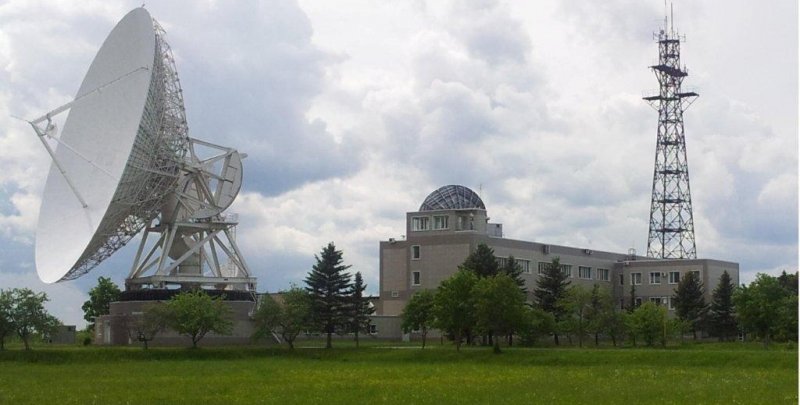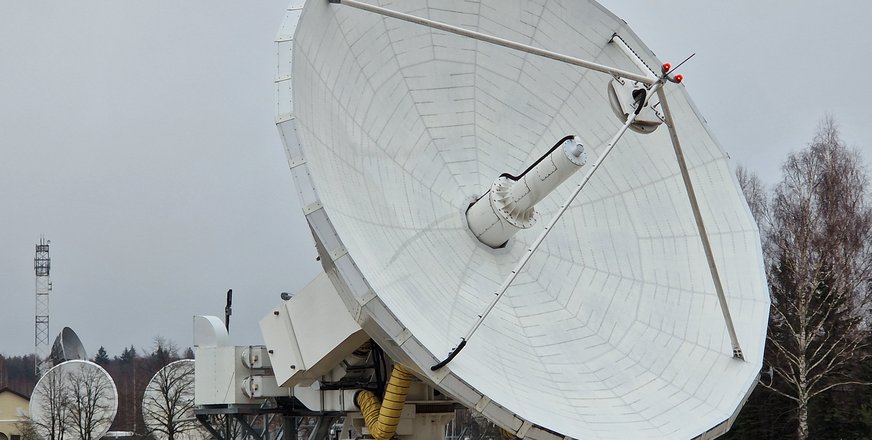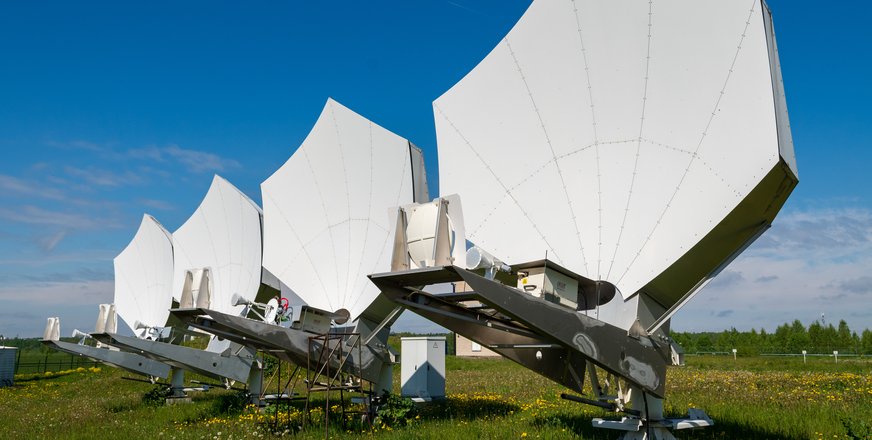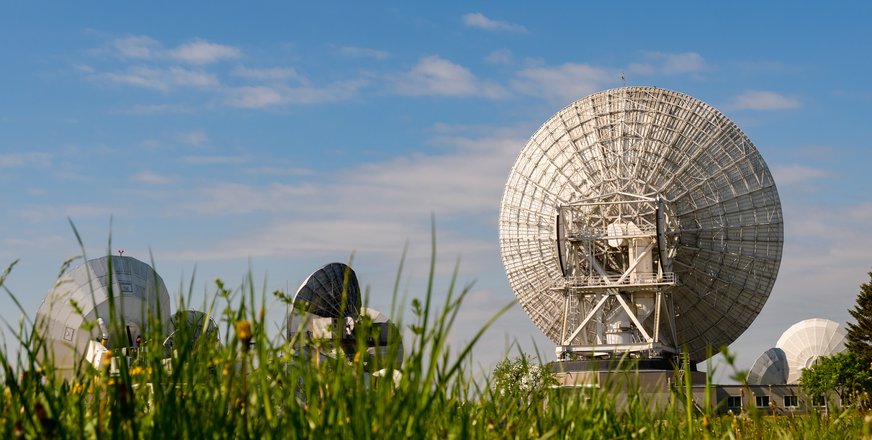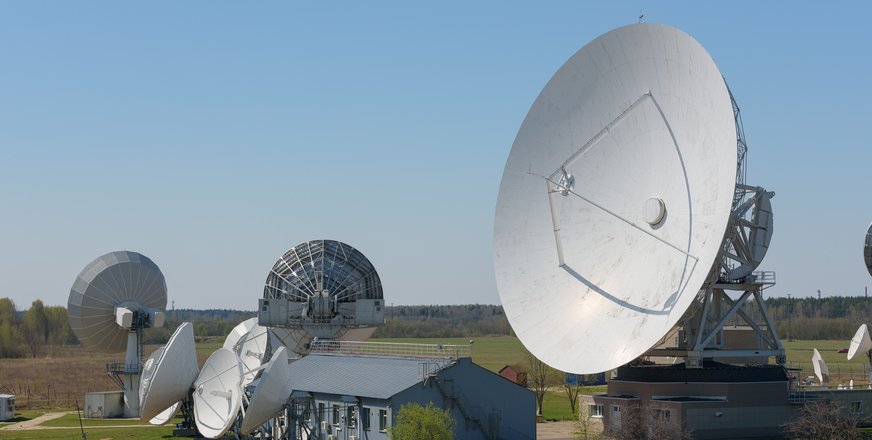Dubna Center
The Dubna Satellite Communications Centre (SCC), a branch of the Russian Satellite Communications Company (RSSC), has been operating since 1980 and is the largest teleport in Russia and one of the largest in Europe.
As part of the complex of the RSCC ground-based technical facilities, the Dubna SCC performs many different tasks in the field of satellite communications.
The SCC qualified staff combines an extensive experience with in-depth knowledge. The Dubna SCC is always ready to solve a wide range of problems in the high-tech and knowledge-intensive telecommunications field, which the satellite communications belong to.
History
The Dubna Satellite Communications Centre (SCC), a branch of the Russian Satellite Communications Company (RSCC), was commissioned in 1980 by the Order of the USSR Minister of Communications as an Olympic facility.
The purpose of the Dubna SCC was to ensure broadcasting of the games for the European countries and the Atlantic region during the Moscow Olympics. The technical facilities were represented by an engineering building and two antenna systems. One antenna, MARK-4 (32 meters), by Japanese corporation NEC, was intended to operate via a spacecraft of the international satellite communications company Intelsat in the position of 335.5° East. Another antenna, TNA-57 (12 meters) by the Soviet Union, was used for operation via the Horizon satellite in the position of 14° West. The ground channels were provided via the radio relay line of the Moscow - Dubna Main Control Centre for Intercity Communications.
After closing of the Olympic Games, operation of the SCC Dubna technical equipment continued. The telephone channels were arranged for the United States, England, Brazil, the government lines were introduced between the Kremlin and the White House, the Elysee Palace and residence in Downing Street, 10. The television news were regularly exchanged with the foreign countries. Almost all foreign television stories first passed through Dubna and then inserted into the news programs of the Central Television.
In 1982, the International Test Field was built and commissioned for testing new satellite communications technology in the frequency ranges 11/14 GHz, 20 and 30 GHz. The created network of receiving and transmitting satellite stations and ground radio-relay lines allowed to study made it possible to study the conditions of propagation of radio waves in the prospective radio ranges of satellite communications. The experiments were finished in 1998.
In the late 70s, when the aim to cover the Central and Eastern Siberia with television broadcasting arose, the country created a television broadcasting system in the frequency range of 700 MHz, which has no analogues in the world up to now. The settlements of the BAM builders, the oil and gas industry workers of Siberia, and the Northern Sea Route ships were able to receive first one and then the second central television programs for the low-cost receivers that did not require expensive parabolic antennas. Two transmitting stations with antennas TNA-57 (12 meters) were built in Dubna for broadcasting, and in 1988 regular television broadcasts of two central programs to Siberia were started. Due to this fact, the number of the receiving stations combined with low-power television repeaters for installation in small towns increased, and by the end of the 90s their amount was already more than 10 thousand.
In the beginning of the 90s, the demand for the main digital satellite telephone lines and arrangement of the satellite television channels increased sharply. The appeared commercial television companies used technical equipment of RSCC to distribute the television programs via satellites. TV-6, NTV, TV-Centre and STS started their operation in Dubna. Sovintel company constructed the Ostankino-Dubna digital radio-relay line to transmit digital telephone traffic to the satellite lines across the Atlantic.
In 1996, the RSCC took part in the international competition for construction of a telemetry and remote control station for the Eutelsat spacecraft. For the first time, an international tender of such level was won by the Russian company, and in 1997 a contract was signed for construction of eight antennas for telemetry and remote control of ten Eutelsat spacecraft in Dubna. The experience gained in cooperation with Eutelsat was subsequently implemented in projects on remote control and monitoring of loading of the satellites of the foreign companies Intelsat and ABS-1 from the Dubna SCC.
In relation with expansion and development of the RSCC own satellite constellation and launch of Express-AM spacecraft, the western centre of the RSCC ground-based control complex was commissioned in Dubna in 2003.
To carry out the orbital measurements of the spacecraft, parameters of the satellite communications earth stations, and constant monitoring of loading of the satellite trunks, the western centre of the automated monitoring and measurement system.
Dubna technical facilities enable operation of VSAT networks . Central stations of the networks serve as a control and switching station, which computers determine the parameters of signals emitted by each peripheral station.
Historical sketch (on the 30th anniversary of establishment of the Dubna SCC)
Preparation works for construction of the Azimut M2 facility began in 1974, after the International Olympic Committee had approved the decision to hold the XXII Summer Olympic Games in Moscow.
Within a short period of time (1977-1979), a huge amount of construction works was performed, the technical building, engineering building with a conference hall, garage building, warehouse for the “Mars” stations were constructed, TNA-57 antenna 12 m in diameter and MARK VI antenna 32m in diameter were assembled, RRL antenna mast was built, several kilometres of utilities were laid, roads were asphalted, and the territory was landscaped. A residential building was constructed for the maintenance staff.
Construction of the station was the result of efforts of many departments, organizations, and institutions. Buildings and structures were created by military builders, works on installation and adjustment of the technical complex were carried out by specialists of Radiostroy trust, Radio Research Institute and other organizations. Next to the erectors, the SCC specialists worked, who, despite the difficulties and unsuitable living conditions, participated in the adjustment tests and mastered the new equipment. A group of Japanese specialists, led by Mr. Suzuki, carried out adjustment of NEC equipment.
The State Committee under the chairmanship of V.M. Krylov accepted the satellite communications facilities with the general rating - “good”. In January 1980, the USSR Minister of Communications N.V. Talyzin issued an order No.67 “On commissioning of constructed satellite receiving-transmitting stations at the Azimut-M facility, a new station Azimut-M2 and additionally equipped existing stations Azimut-M and Azimut-L”. The assistance and active participation of the SUR-9 team in construction, installation, and adjustment of satellite receiving and transmitting stations and interconnecting radio relay lines was noted in it.
The architectural appearance of the main building facade was made by sculptor A.D. Kornaukhov, a laureate of the State Prize. The embossed sculptural panel is made of stainless-steel plates. The composition pushes the space and gives the industrial building fantastic shapes.
The team of the Dubna Satellite Communications Centre was awarded the Certificate of Merit by the National Olympic Committee, and some of the most distinguished participants were honoured government awards, for early and high-quality commissioning of the Azimut-M2 Olympic facility.



